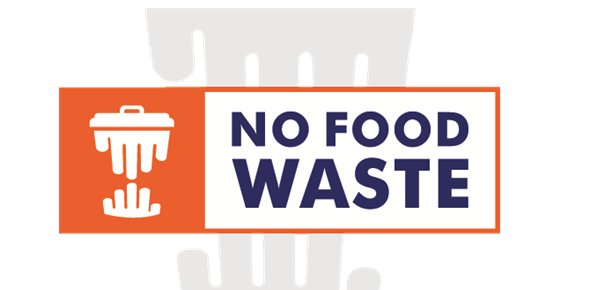You would also need to be clear about what parts of your behaviour and thinking have to be changed to stay on top of your food waste prevention game.
The importance of minimizing food waste is nearly as universally understood as the importance of good health. But in both cases, it’s easy to convince yourself that you’re doing a better job than you really are.
Put yourself in the shoes of someone looking to shed a few pounds. You might decide to go to a 5-day fitness boot camp. Even if you achieve your desired weight during that intensive period, you wouldn’t expect to maintain any gains if you went back to your old ways after, would you? It is exactly the same with food waste prevention programmes in your business — it requires adopting a daily routine, as well as changing your diet!
You would also need to be clear about what parts of your behaviour and thinking have to be changed to stay on top of your food waste prevention game. So here are seven common misperceptions that food business operators, including restauranteurs and hotel managers, have when it comes to food waste.
1)We don’t waste that much food (…we think)
Ignorance is bliss, at least in some contexts. But in a business one, you can’t manage what you can’t measure is more appropriate. In other words, wasting food= wasting money, so it’s paramount to gain a thorough understanding of what you are wasting to understand how much is wasted, when it’s wasted (which shift of the day, which day of the week – especially delivery days!), where it’s wasted (spoilage? preparation? buffet? plate?), what is wasted, and why it’s wasted.
To get there, all you need are a simple system of color-coded bins and containers, a small kitchen scale, an Excel spreadsheet, and a commitment to do the job to get you started on measuring how much food waste you actually generate.
2)It’s the chefs’ responsibility
Wrong, especially for larger operations with several outlets and dozens of bins that act as “food waste black-holes”.
Food waste is the responsibility of everyone who handles food within your organisation, so you have to include all members of staff who come into contact with the produce: your purchasing manager, to integrate knowledge of the shelf-life of products into purchasing decisions; the receiving manager, to thoroughly check the quality of items to avoid spoilage; the storage manager, to monitor expiry dates; service employees to keep an eye on less popular items; and engineers, to run routine checks on the calibration of equipment (especially fridges and ovens) and avoid unnecessary food waste.
3)We forget to explain why we’re saving food
Depending on your geographic and cultural context, your employees may never have learned why wasting food is so bad for the environment (misuse of arable land, chemical inputs in the soil, water waste, waste from packaging, CO2 from transportation, processing, and storage), from a social perspective (the indecency, as up to 900 million people still do not have enough to eat), and for your profitability. Ensure that food waste becomes a topic mentioned to your employees on a daily basis if you expect perspectives and practices to evolve.
4)No need for the carrot, the stick will do
It is harder to force people to change their SOPs (standard operating procedures) if you can’t answer the question: “What’s in it for us?”
Simple and inexpensive incentives, such as a “Food Lover of the Month” award, in which you invite your most dedicated employees to eat “like a guest” in your restaurant, can effectively produce effective results. Or be a bit more daring: set up an employee’s fund, where a certain percent of the savings made on the food cost percentage will be redistributed and used by employees for staff outings, birthday celebrations or staff parties. Giving people positive reasons to comply is by far the most impactful approach you can adopt to get everyone on board.
5)We control the buffet, we control food waste
By the time food reaches the buffet line, it has been through several critical food waste-generating points.
In some hotels, we have seen that up to 47 percent of food waste occurs at the pre-consumer level, either as spoilage or preparation waste. Do not underestimate the importance of accurate forecasts, good storage (calibration of equipment and best practices like First in First out), and preparation (standard recipes, knife skills, and general awareness of employees) in your efforts to reduce waste. A lot of improvements can be made upstream.
6)Our food cost is within budget= we are doing great
As food business owners and managers, you are most likely to be using food cost percentage, or the ratio of the cost of food to total sales generated from selling food, to monitor the financial performance of your operations, and if you are within budget, you may consider the job as done. The problem is that your food cost percentage does not reflect how effective you are with maximising the use of food as a resource. We have worked with hotels that have had a very low food cost percentage, around 28 percent, but also had high levels of food waste in their operations.
Instead, we use our tool called the Food Efficiency Indicator (FEI), which is calculated as (total amount of food waste in kg) / (total food bought in kg). For that particular hotel, the result showed that out of 100 kg of food bought for outlets, 38 kilos were ending up in the bin a way or another! The FEI measure only looks at the amount of produce that can be consumed, so things like inedible vegetable trimmings are not counted towards the amount of food waste generated.
Imagine how you could improve your profitability if you adopted this key performance indicator and made it a focus within your business model.
7)It’s too much effort for such few benefits
The financial impact of food waste is very often misunderstood, mainly because of a lack of clear first-hand data (how many kilos of food is wasted per day), and the fact that associated costs are almost systematically overlooked.
To calculate the true cost of food waste, you need to take the purchasing price of each item, and add costs related to energy, water and labour. According to the Waste and Resources Action Programme (WRAP), a leading UK think tank on food waste, the purchasing price represents only 62 percent of that true cost.
So when you know that a hotel selling 15000 meals a month can generate more than 70 tonness of food waste per year, and that the average true cost of food waste per kilo is 5 USD, it becomes easier to understand the scale of savings to be made from reducing food waste.
Getting your food business fit can be easily achieved by taking a few steps in the right direction and committing to extra exercise. But where do you begin?
Food businesses can start saving on food expenses by looking at the scales, if you dare! We have seen hotels serving fewer than 400 daily covers (and an additional 1000 for the staff canteen) making losses of 1600 USD per day!
Twenty percent of that cost can be saved by implementing a monitoring system, reviewing your storage practices and empowering your employees. Start small and monitor change, you will be pleasantly surprised when you see how much you can save by paying real attention to this issue!
 Benjamin Lephilibert is a Guest Speaker, Guest Lecturer, Responsible Tourism Award Judge (PATA, Franco-Thai CC), Consultant, Trainer and Developer of innovative and financially efficient Hotel Sustainability Programs: Food Waste Prevention programs, Support to Green Certification, Optimized Guest Participation in Hotel Sustainability programs, support to local communities and online reputation improvement.
Benjamin Lephilibert is a Guest Speaker, Guest Lecturer, Responsible Tourism Award Judge (PATA, Franco-Thai CC), Consultant, Trainer and Developer of innovative and financially efficient Hotel Sustainability Programs: Food Waste Prevention programs, Support to Green Certification, Optimized Guest Participation in Hotel Sustainability programs, support to local communities and online reputation improvement.



![[PR] PR_Ascott and Vimut Hospital_2024](https://www.traveldailynews.asia/wp-content/uploads/2024/04/PR-PR_Ascott-and-Vimut-Hospital_2024-400x265.jpg)































































